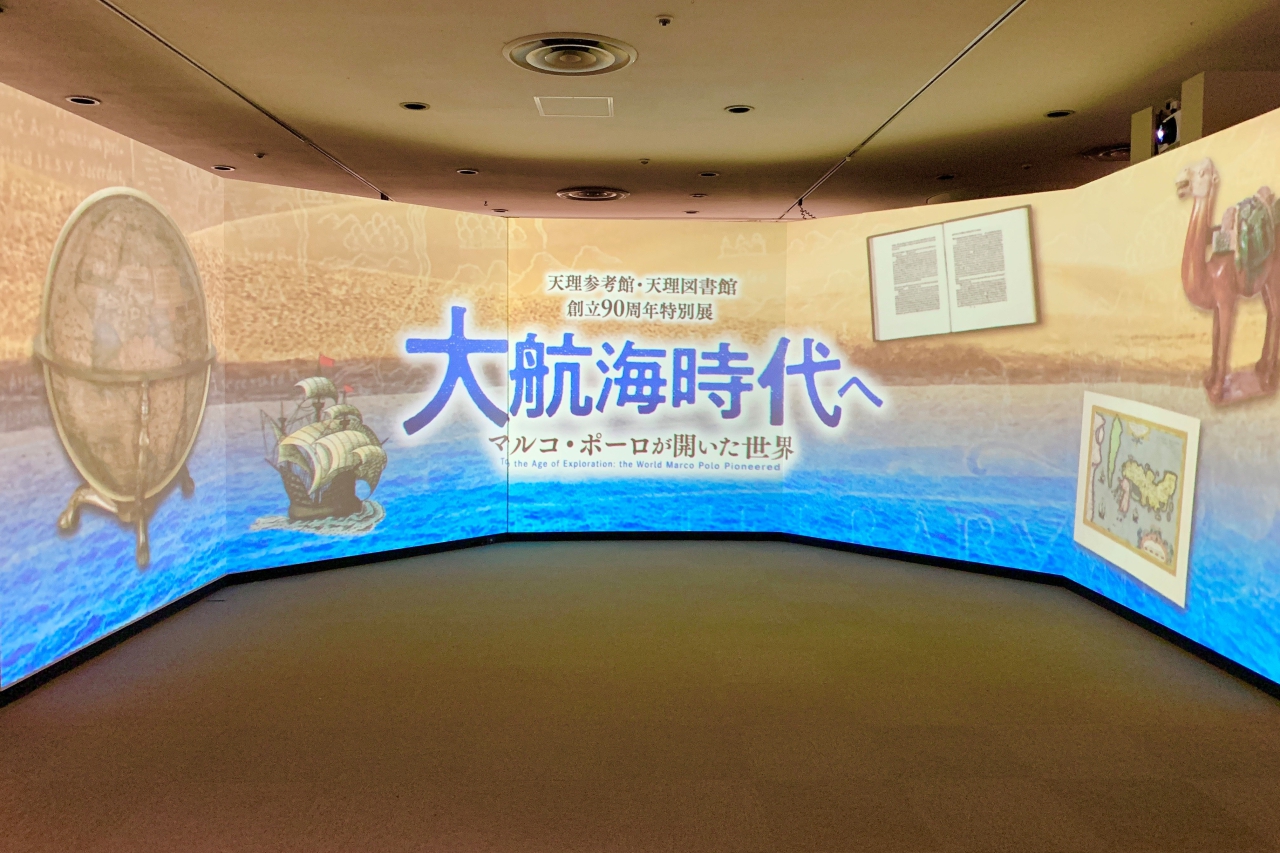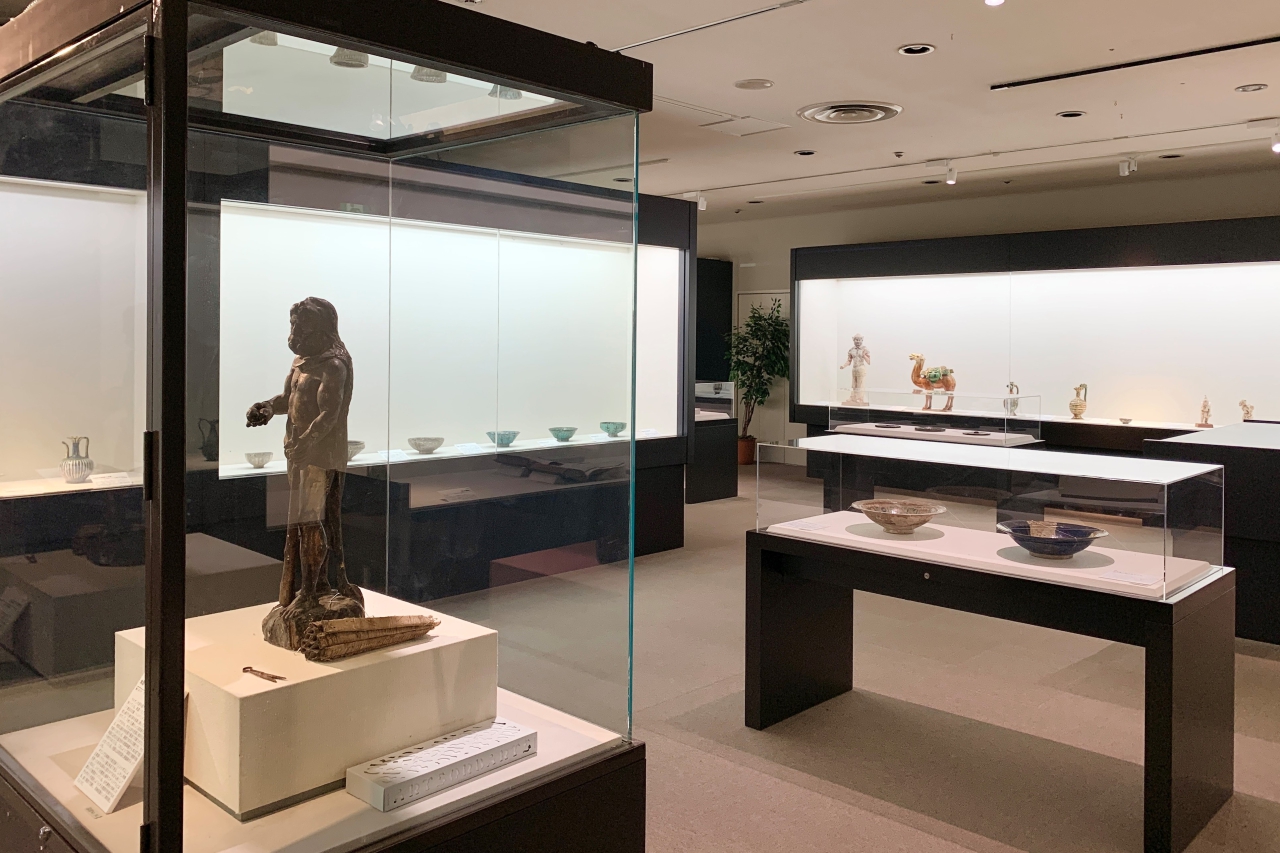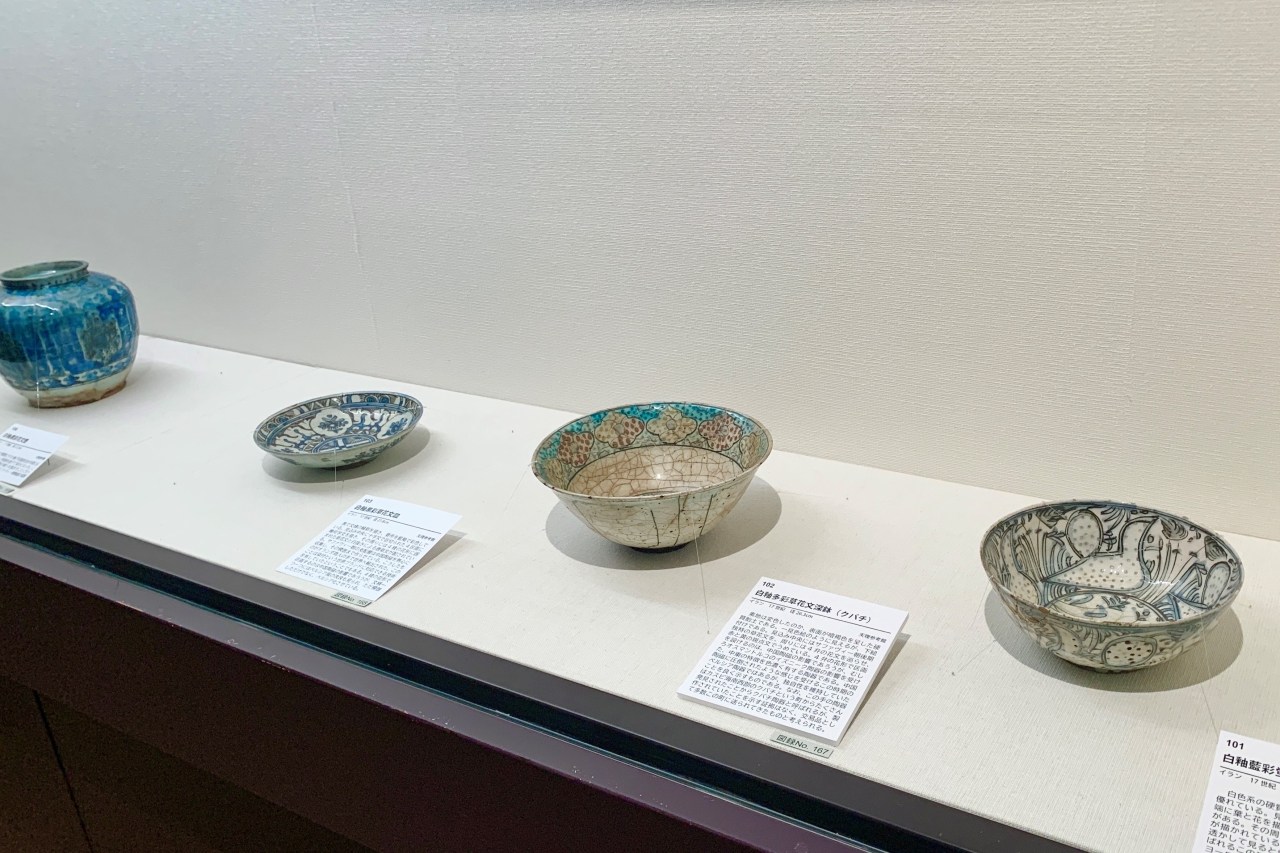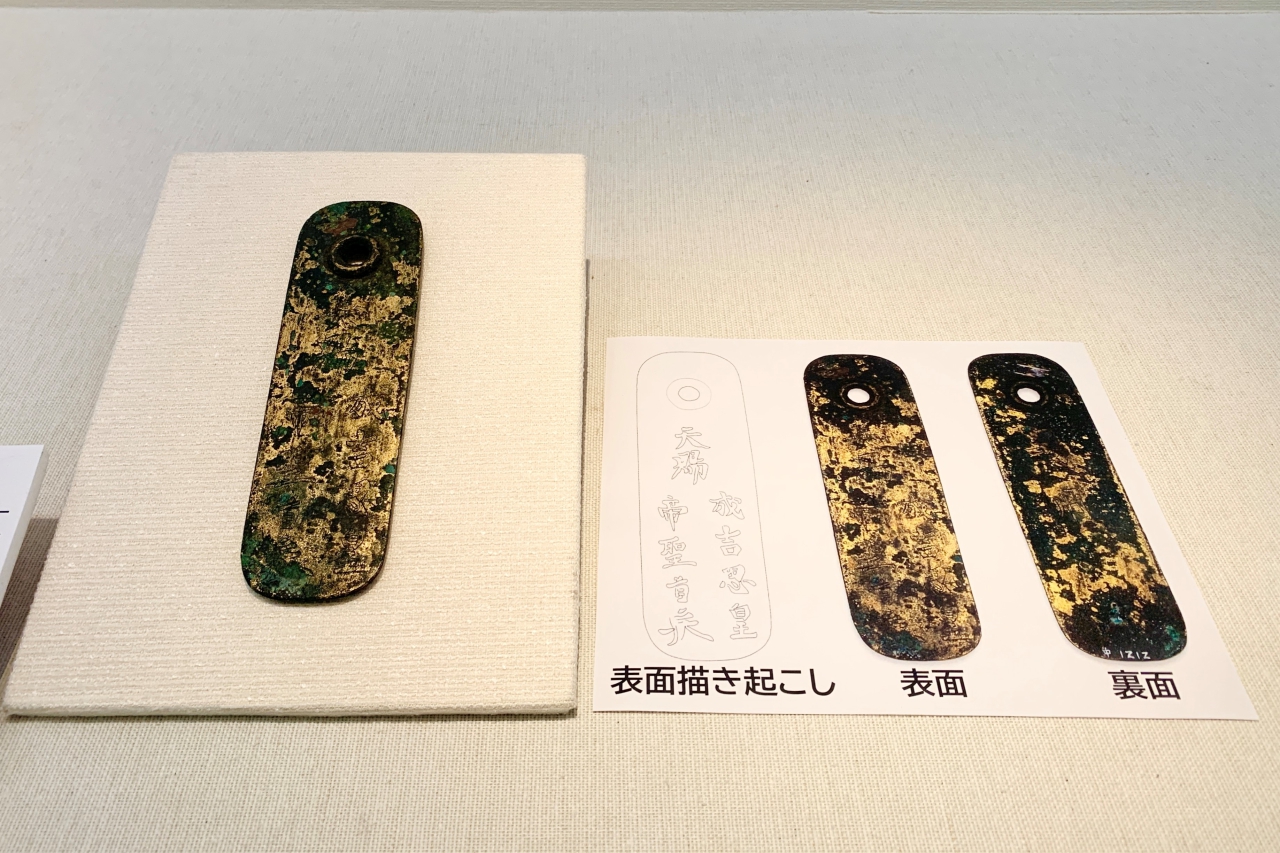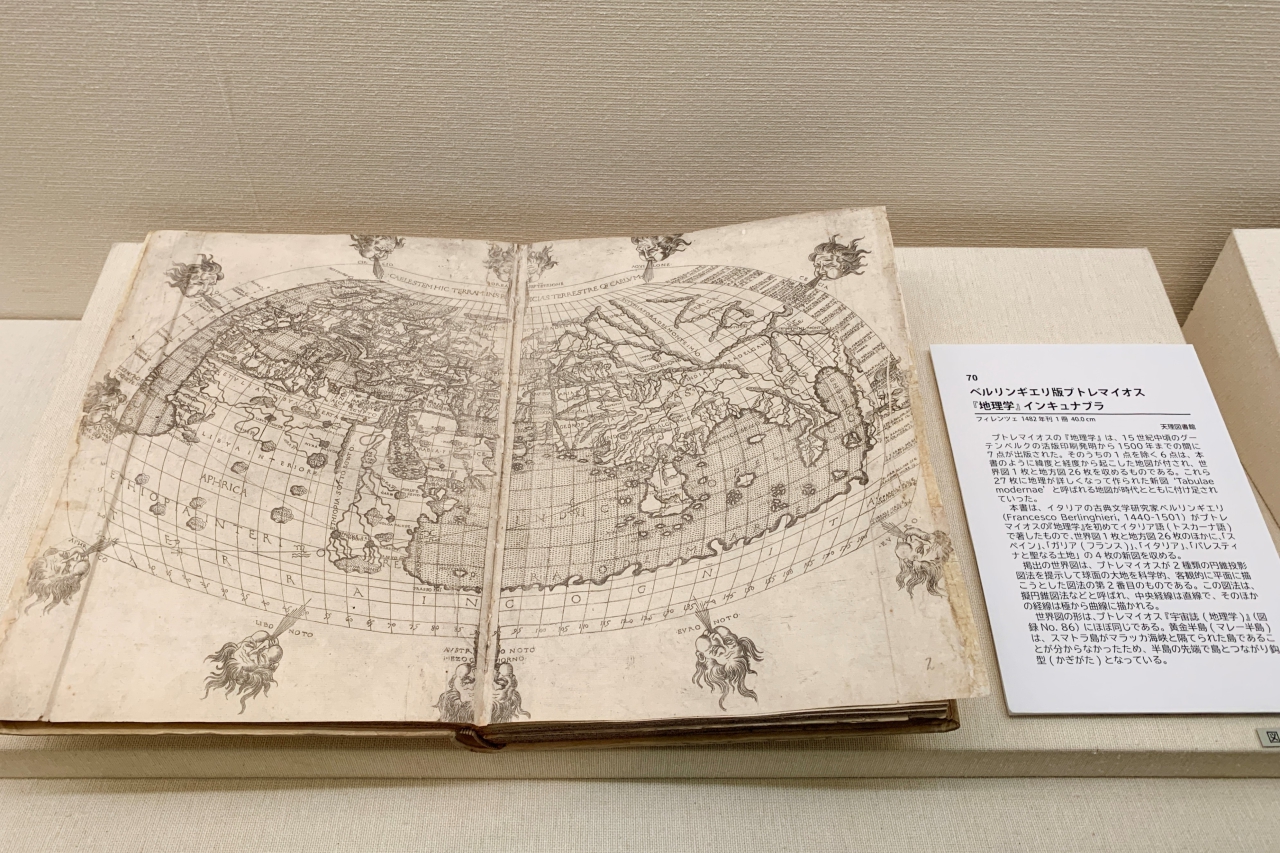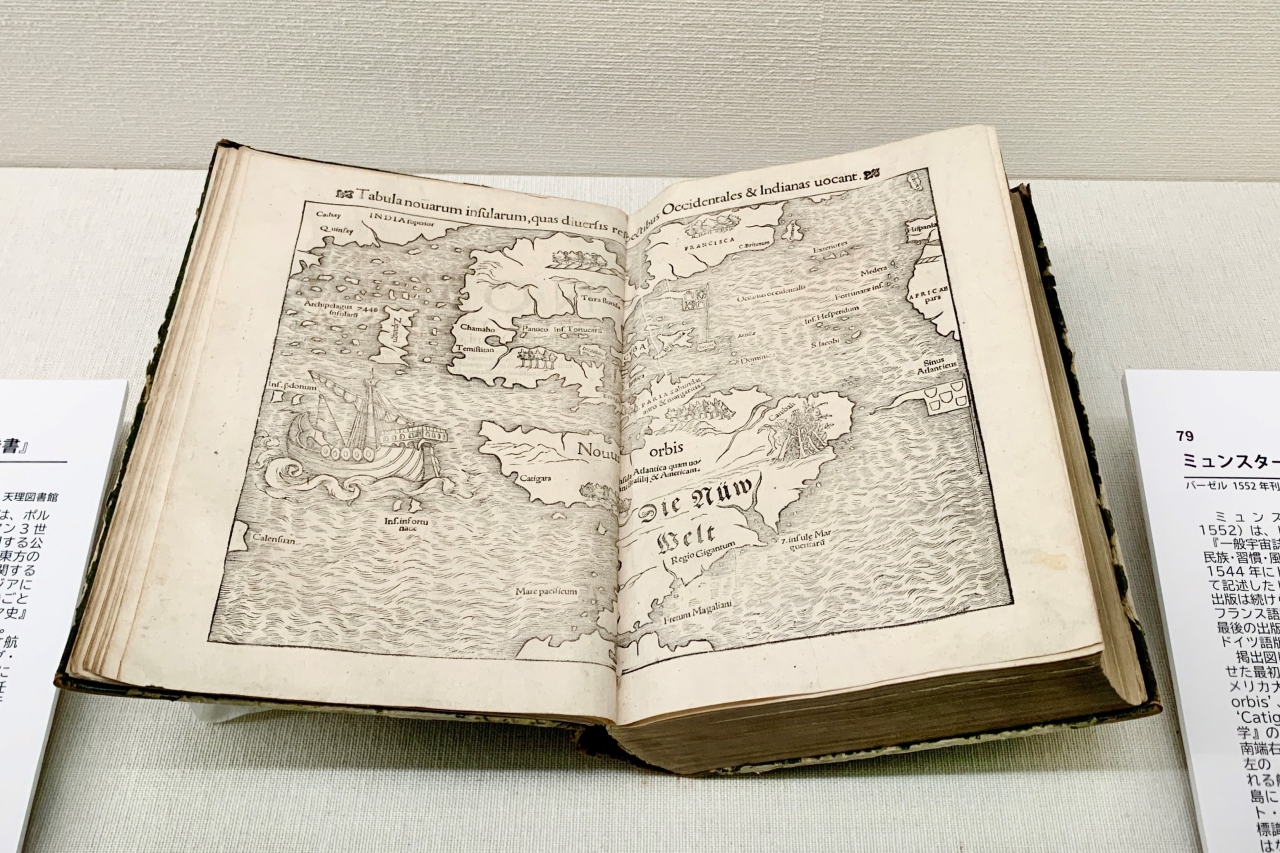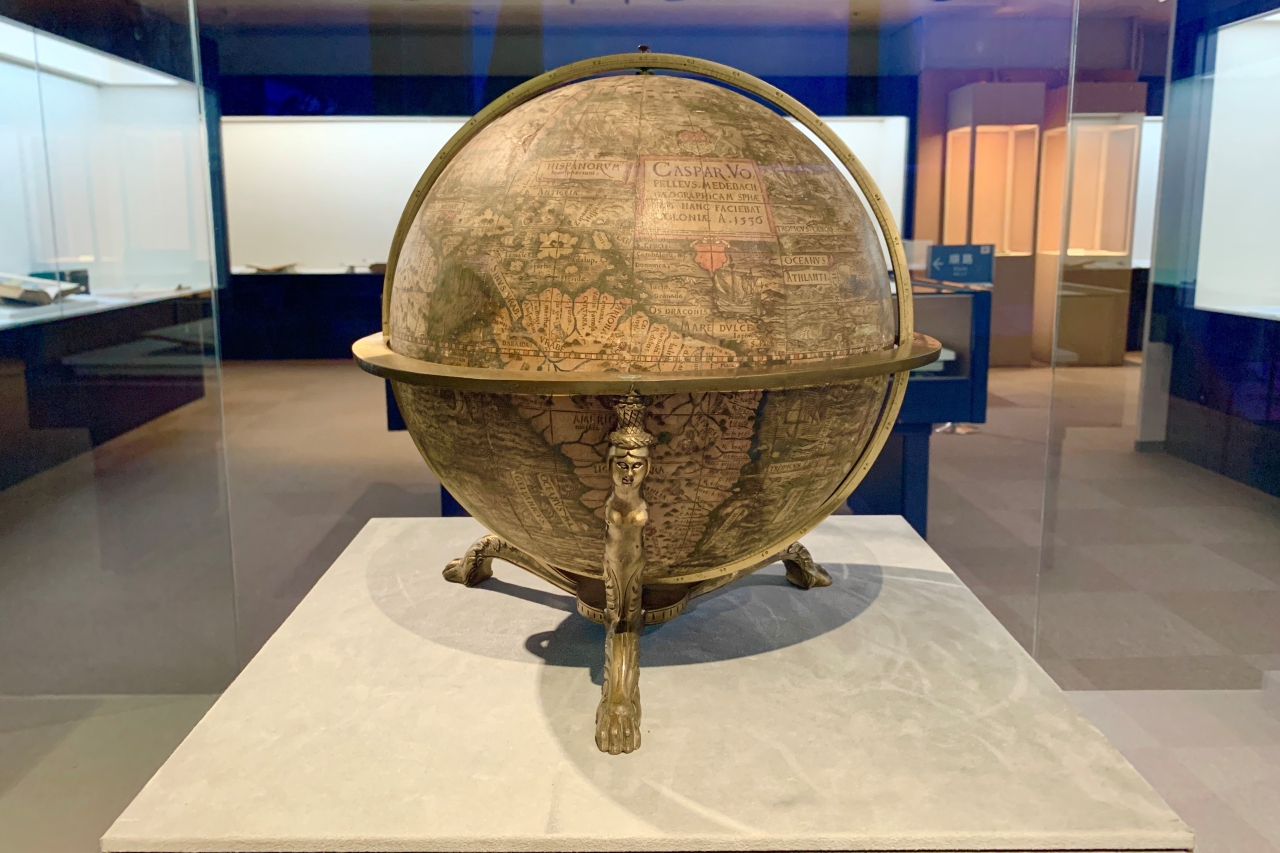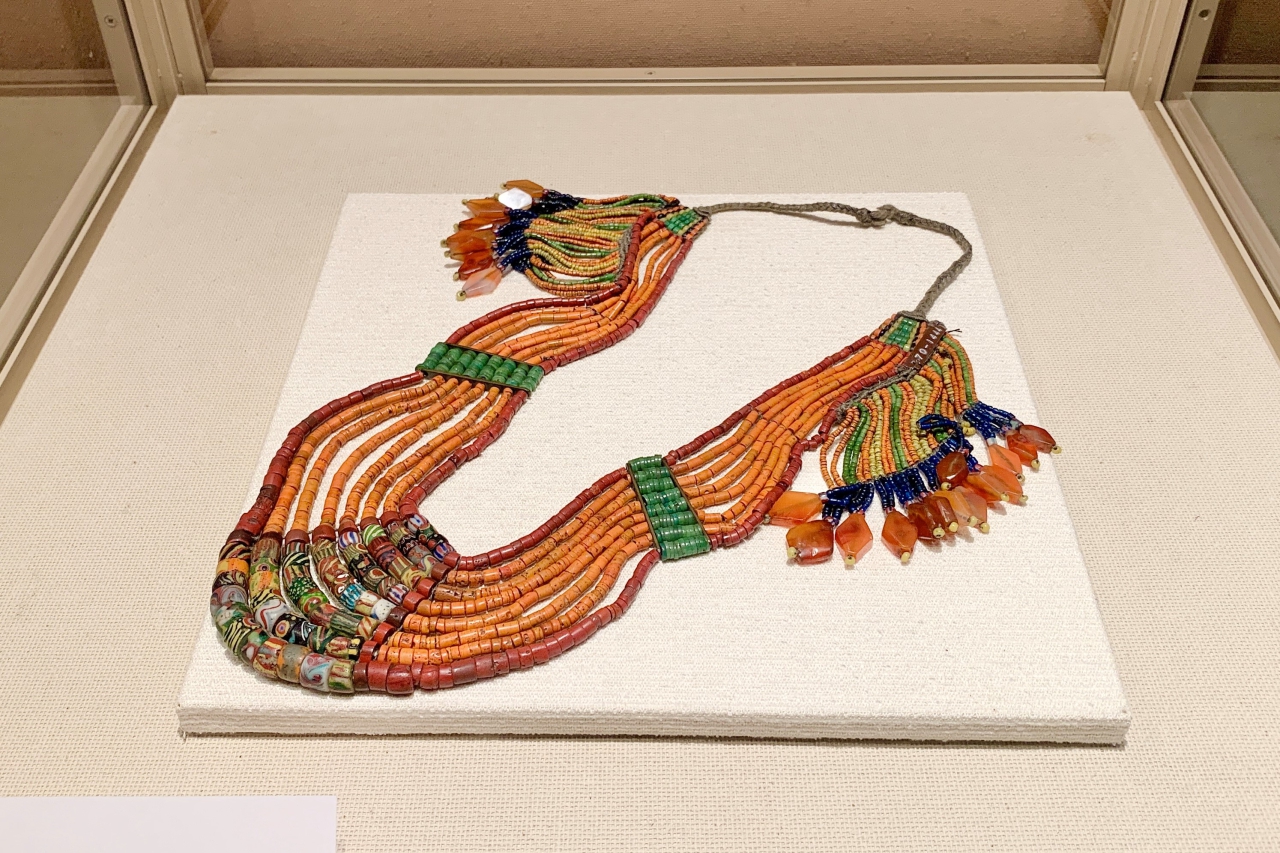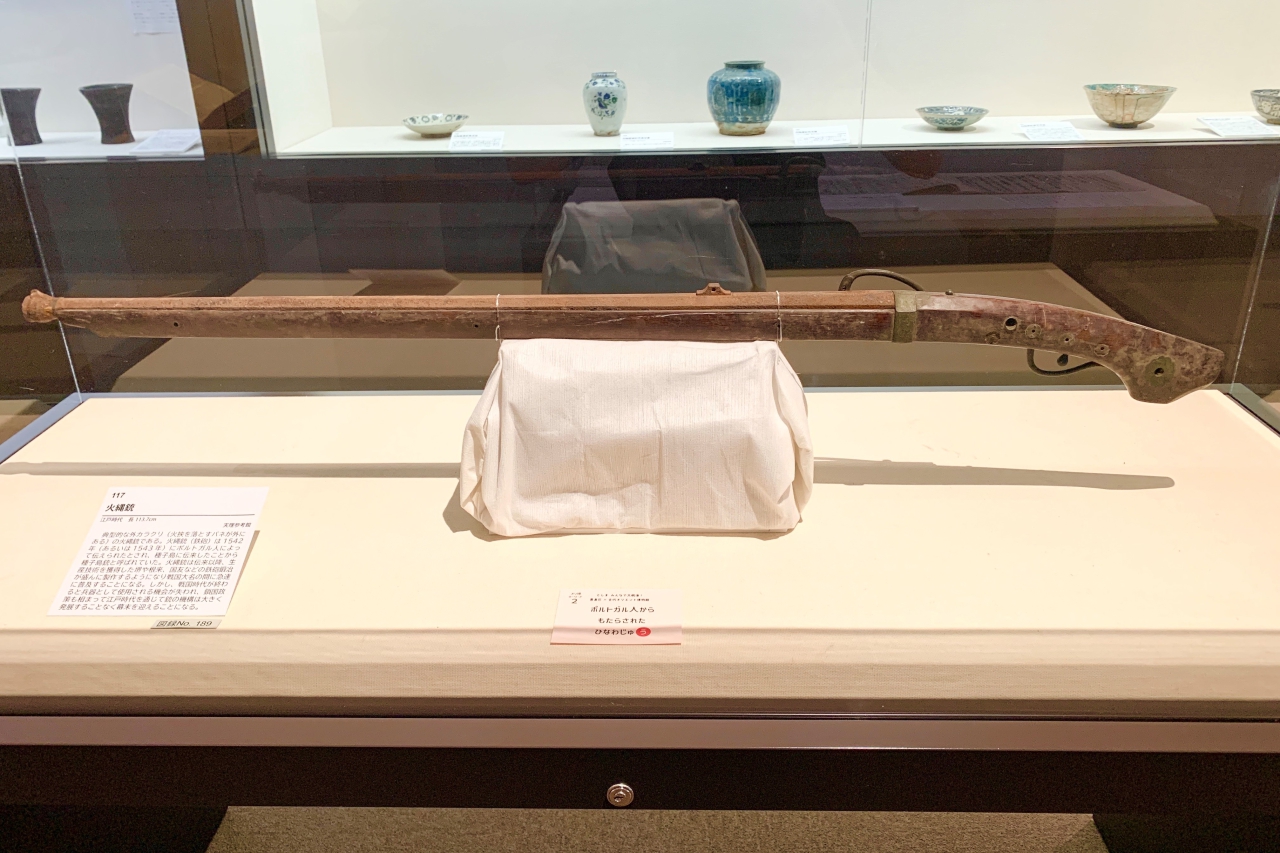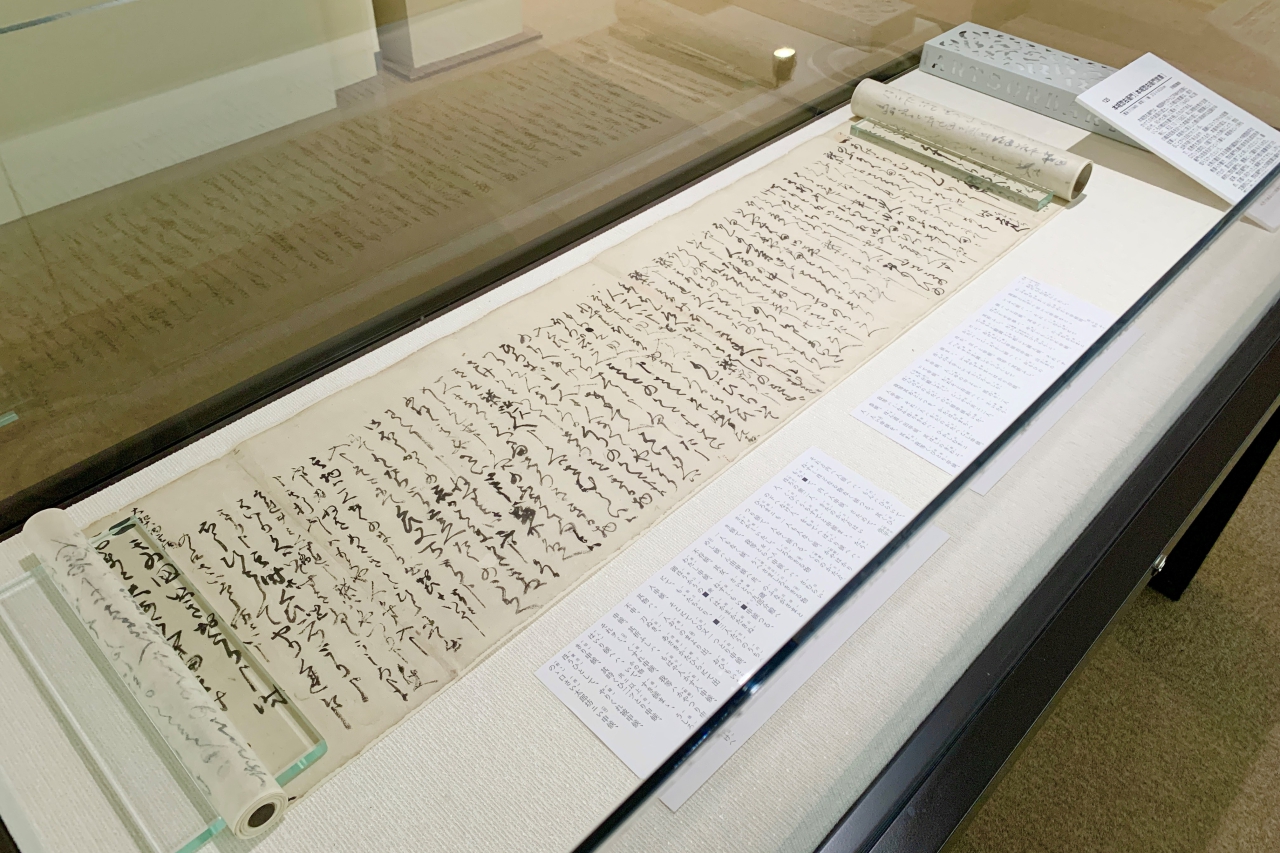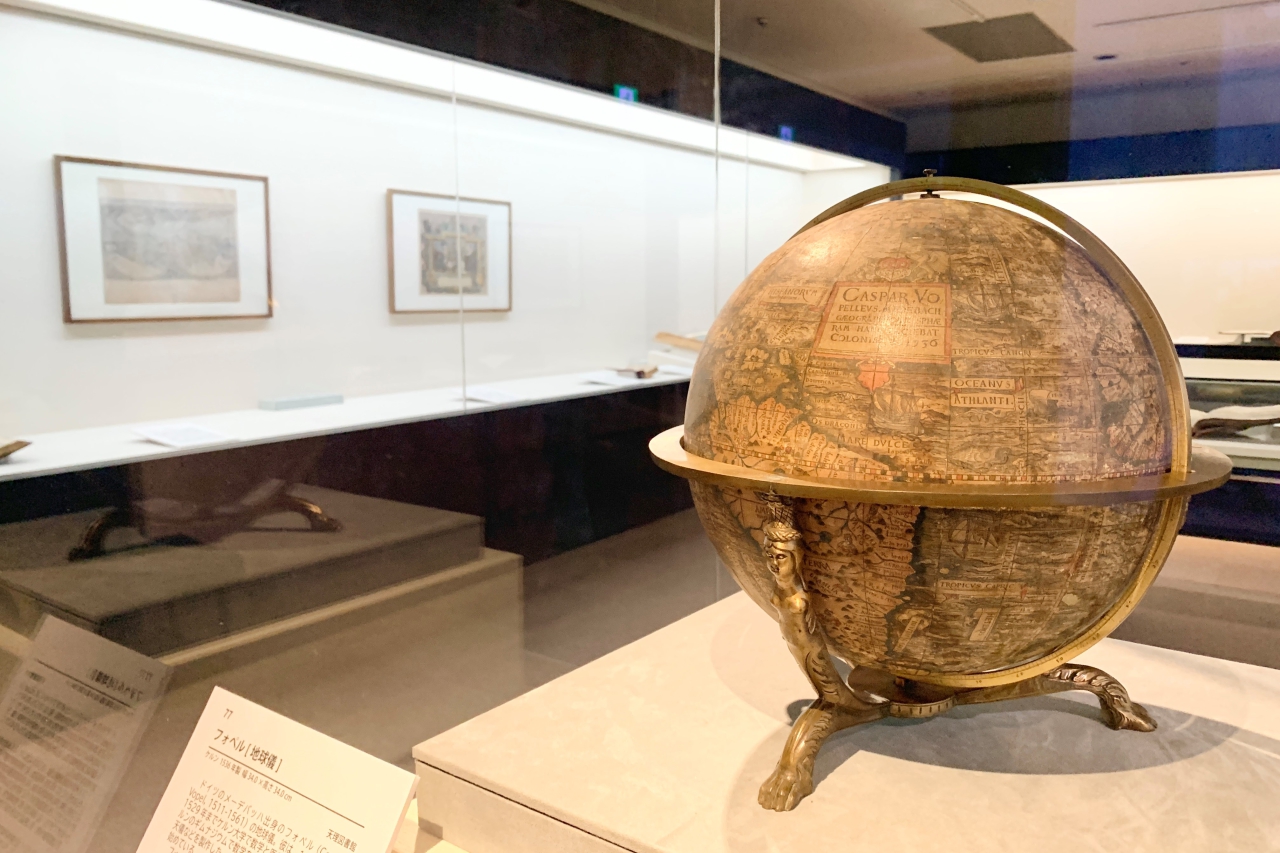
During the period from July 16th (Sat) to September 11th (Sun), 2022, the Ancient Orient Museum in Ikebukuro, Tokyo will hold a special summer exhibition "To the Age of Discovery – The World Opened by Marco Polo" . It is held.
Since I participated in the press preview held earlier, I will report on the state of the venue.
*The posted images were taken with special permission. You cannot take pictures of the general public.
The age of great voyages that began with "Touhou Observations"
Marco Polo (Italy: 1254-1324), who traveled the Silk Road and stayed for 17 years in the vast Mongol empire that spanned the east and west of the Eurasian continent, described what he saw and heard in various places in the travelogue Touhou by the storyteller Rustichero. Observations”.
Many adventurers, such as Columbus, were inspired by the wealth and gold-filled Orient (China and Zipangu) and the existence of spice-producing islands depicted in Tohokenbunroku, which later produced many manuscripts. 15th to 17th centuries) became the driving force for the adventurous spirit that opened up.
This exhibition presents the exchanges between the East and West along the Silk Road (4th to 12th centuries), the period of the Mongol Empire (13th to 14th centuries), which were the foundations of Toho Observations, and the exchange of people, goods, and culture for the first time in world history. An introduction to the Age of Discovery that began on a global scale.
About 200 items such as valuable archaeological materials, arts and crafts, books, maps, documents, etc., held by the Tenri Reference Museum and Tenri Library in Nara are on display.
Chapter 1: The Adventures of the Silk Road and Marco Polo
Chapter 1 introduces cultural relics that show the active exchanges between East and West Eurasia that were already taking place before the Age of Discovery.
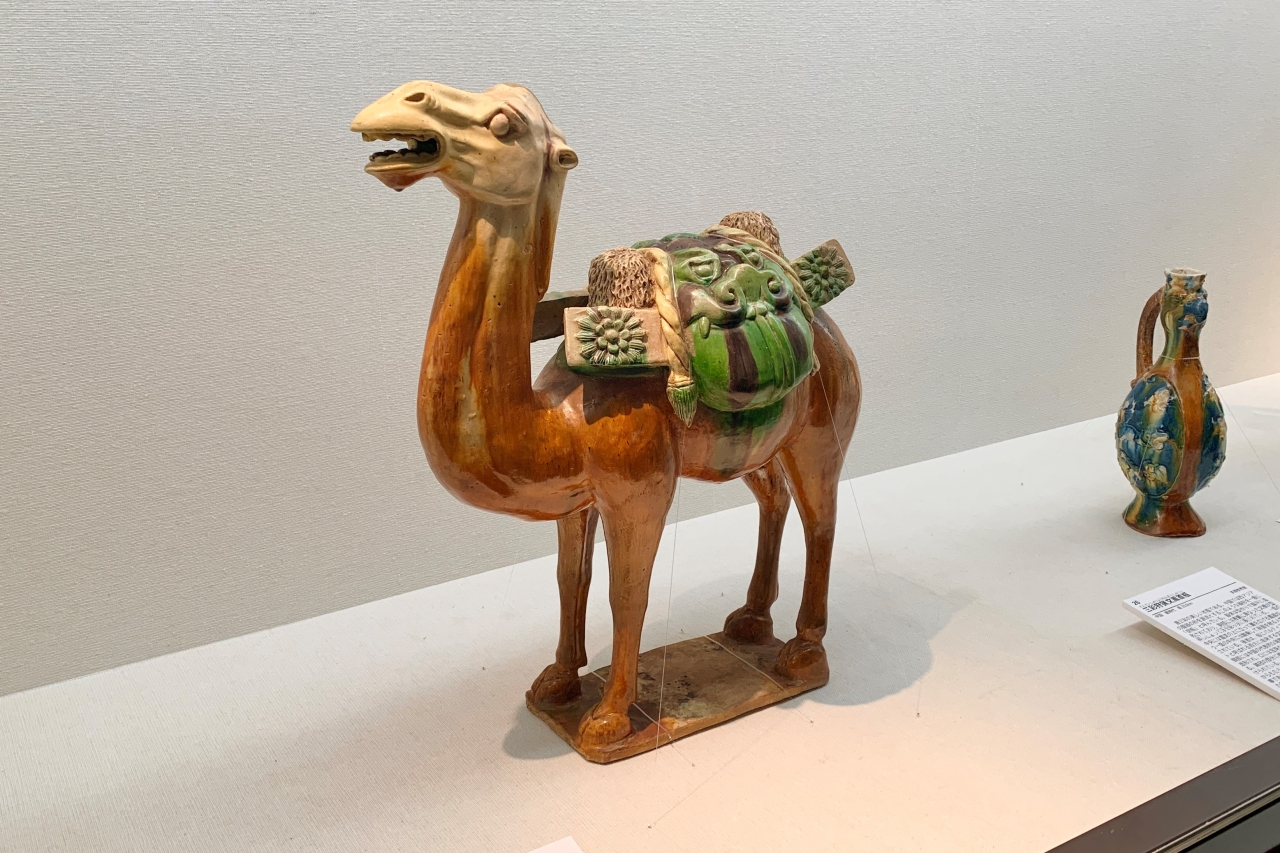
Pottery in the shape of a camel that traveled the Silk Road "Three-Colored Camel" China, Tang Dynasty

Women playing the ancient Persian polo game that was popular during the Tang dynasty. Left "Yellow and White Glaze Colored Equestrian Girl", Right "White Porcelain Colored Equestrian Girl" Both from China, Tang Dynasty

Left (Silver-clad iron dagger), Right (Gold-plated silver-clad iron dagger) Both are said to be Iran, Sassanid period, circa 5th century
For example, the "Silver-clad Iron Dagger" and "Plated Silver-clad Iron Dagger" are from the Sassanid dynasty, an Iranian dynasty that prospered from around the 3rd to 7th centuries.
In the Sasanian Dynasty, only the emperor, prince, or those permitted by the king could wear it, but similar examples have been found in Kazakhstan and Gyeongju, South Korea. It is a valuable craft that can only be found in the Tenri Reference Museum in Japan, showing how it spread along the "sealand road" of the three Silk Roads.
In addition, various cultural relics were brought to China from the western world through the Silk Road. Tang sancai water jars such as , "Sancai Dragon Ear Vase" .

Left "Three-color phoenix neck bottle with hunting design", Right "Three-color dragon ear bottle" Both from Tang Dynasty, China
Tang Sancai is a pottery that effectively uses various colors of glaze. In China, it was called "Kohei", and it is said that people at that time were immersed in the exotic charm of the West when they saw this shape.
If you pay attention to the "Three-color Hunting Design Phoenix Neck Vase", you can see the Chinese phoenix, a typical auspicious bird, and the hunting pattern used in the Persian region called Parthian Shot.
In terms of colors, in addition to the brown and green that originated in China, we can also see indigo blue (cobalt oxide) brought from West Asia. You can enjoy it.
Tang sancai is said to have had a great influence on foreign pottery, giving birth to Nara sancai in Japan and Persian sancai in the Islamic world. In addition to the Persian Sancai pottery on display at the venue, there was also a Chinese pottery-style pottery made in Iran.
Another interesting aspect of this exhibition is that you can feel how fashion spreads from west to east and from east to west, and how people in the east and west look at each other with admiration.
In addition, there is a material that shows the inner situation of the Mongol Empire, in which Marco Polo played an active role, "Paiza" .
How was Marco Polo, an Italian merchant, able to travel safely from Venice to the capital (now Beijing, China) and then travel around the Mongol Empire? This was because the Mongol Empire, which straddles the Eurasian Continent, ensured security, and because it was protected by Emperor Kublai, who emphasized economics and commerce.
The Mongol Empire emphasized transportation and trade policies, and established a relay race throughout the empire to secure a transportation network. Marco Polo, who was given the paiko by the emperor, is said to have been able to use the lodgings and horses of the ekiden freely and move efficiently.
It seems that the entire surface was once plated, but now the plating is peeling off and it looks like a camouflage pattern. However, if you take a closer look, you can see the character of Genghis Khan's name in China, "Emperor Genghis Khan".
Chapter 2: To the Age of Discovery
Chapter 2 is finally entering the Age of Discovery.
At the time of its publication, Tohokenbokuroku was treated as unbelievable, but during the Renaissance, humanists began to recognize the importance of information.
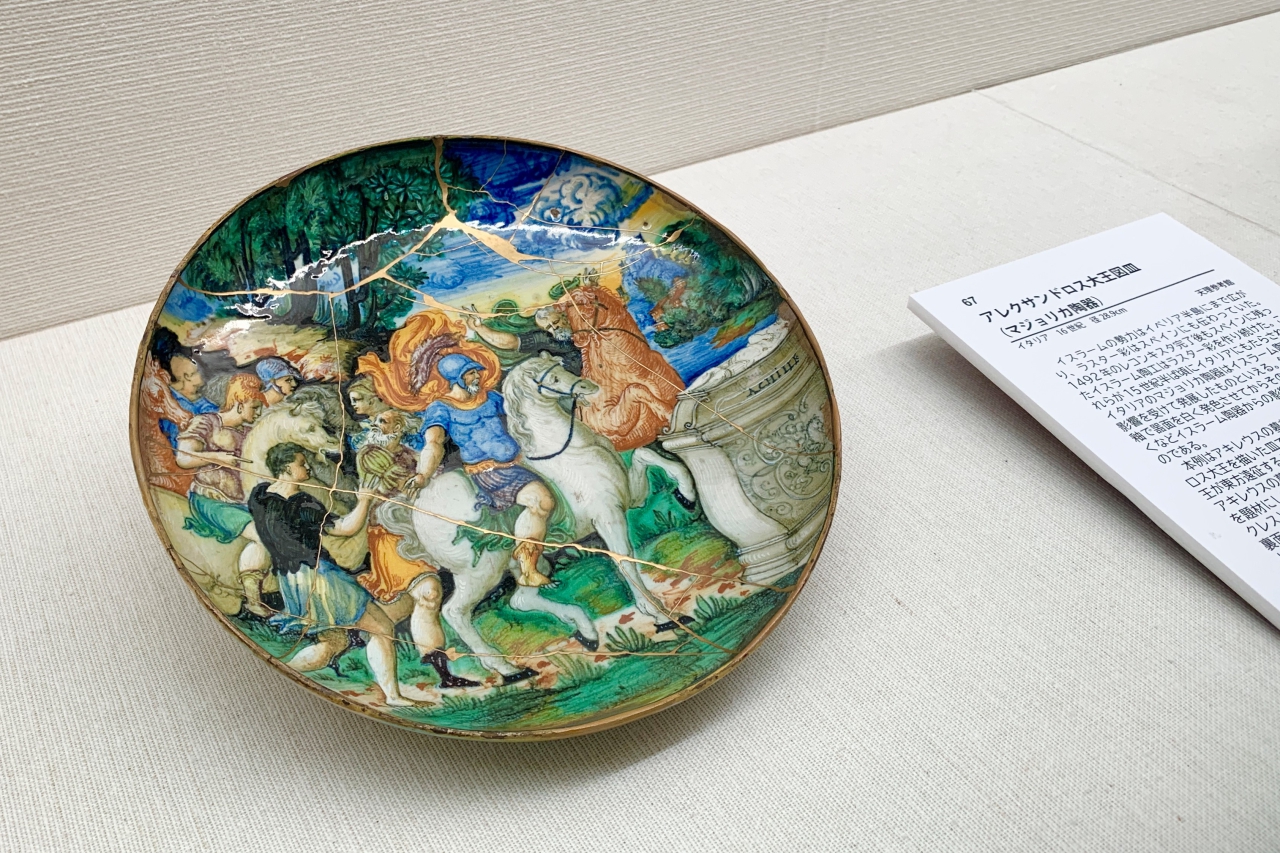
An example of a Renaissance-like work in which the art of ancient Greece and Rome was reconsidered. 《Alexander the Great Plate (Majolica Pottery)》 Italy, 16th century
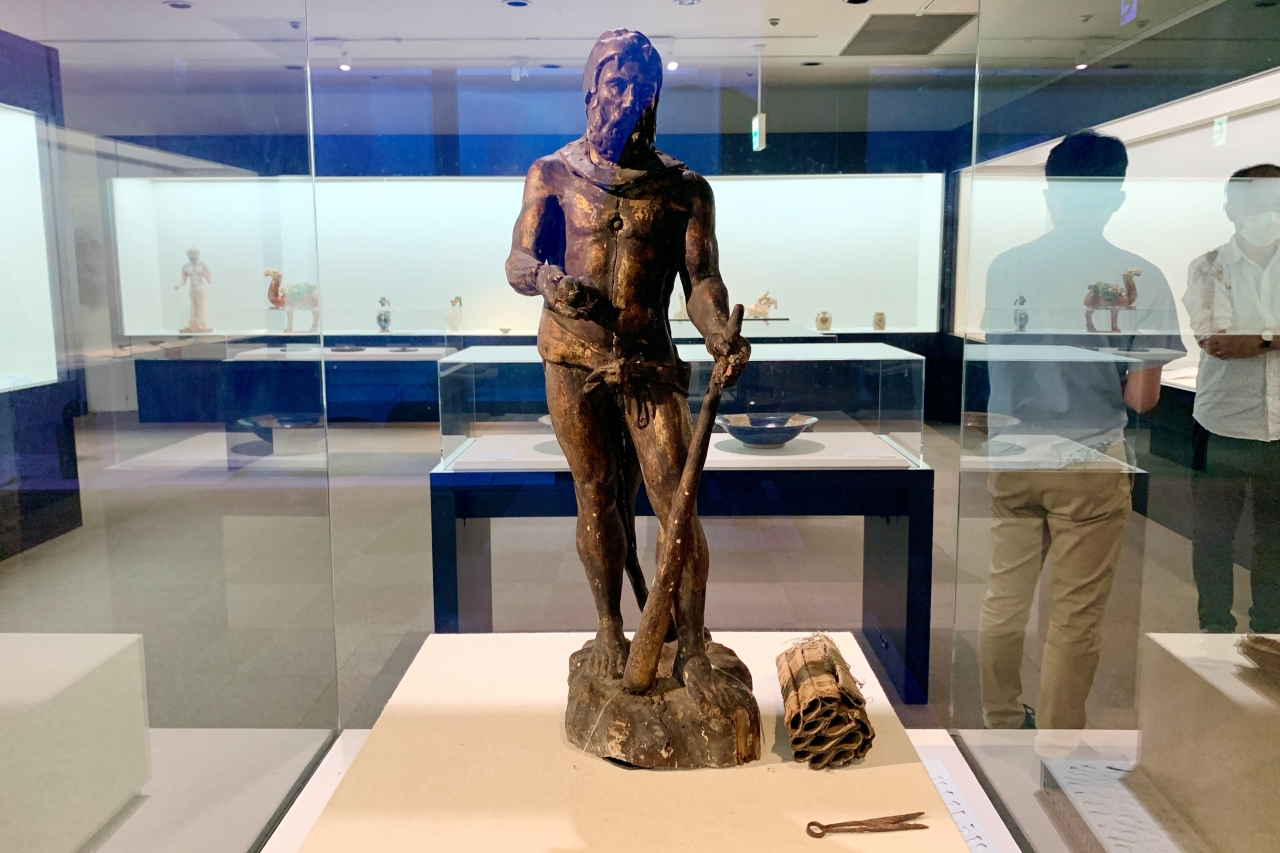
This is also a statue derived from Greek mythology unique to the Renaissance period. 《Wooden Statue of Hercules》 Susumu Italy, around 15th to 16th century
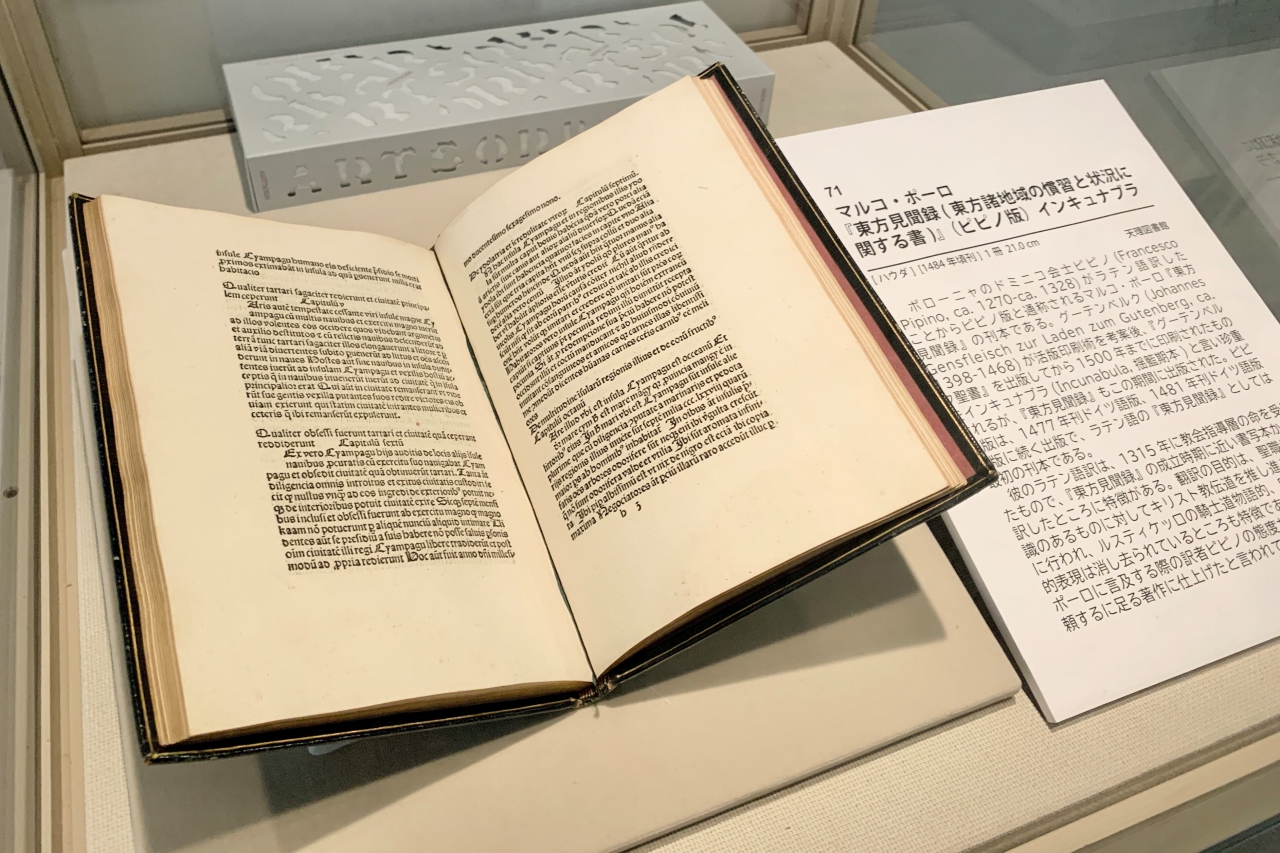
Marco Polo, Observations of the East (Books on the Customs and Conditions of the Eastern Regions) (Pipino Edition), Incunabula, Gouda, circa 1484
"Touhou Kenbunroku" became a must-have book for sailors in Spain and Portugal as a guidebook that led people to great wealth. Although the original has not survived, this exhibition includes reproductions of the Latin "Touhou Kenbunroku" (Pipino version) published around 1484, as well as the handwritten notes of Columbus, who set sail for Zipangu, the Land of Gold in 1492. Books are on display.
Regarding Asia and the Indian Ocean, a certain amount of geographic information had already been accumulated by the Chinese and Arabs. The world map will be rewritten.
At first, Columbus and Magellan relied on old world maps full of errors in the 2nd-century Roman astronomer Ptolemy's Geography, which were rediscovered during the Renaissance.
At the venue, starting with the map of Ptolemy at the beginning of the Age of Discovery, Münster's "General Cosmology" , which is almost the first book that depicts the Americas as an independent continent, and Japan but other than Kyushu. I am very excited to be able to appreciate “the way the world looked to the people of the time ”, such as Dourad’s “World Atlas” , which has a fluffy shape!
The first half of Chapter 2 has quite a lot of books and maps, and at first glance, it gives the impression that it is plain or difficult, but in fact, it may be said that this is the main highlight of this exhibition.
The small differences are interesting, so be sure to compare each map.
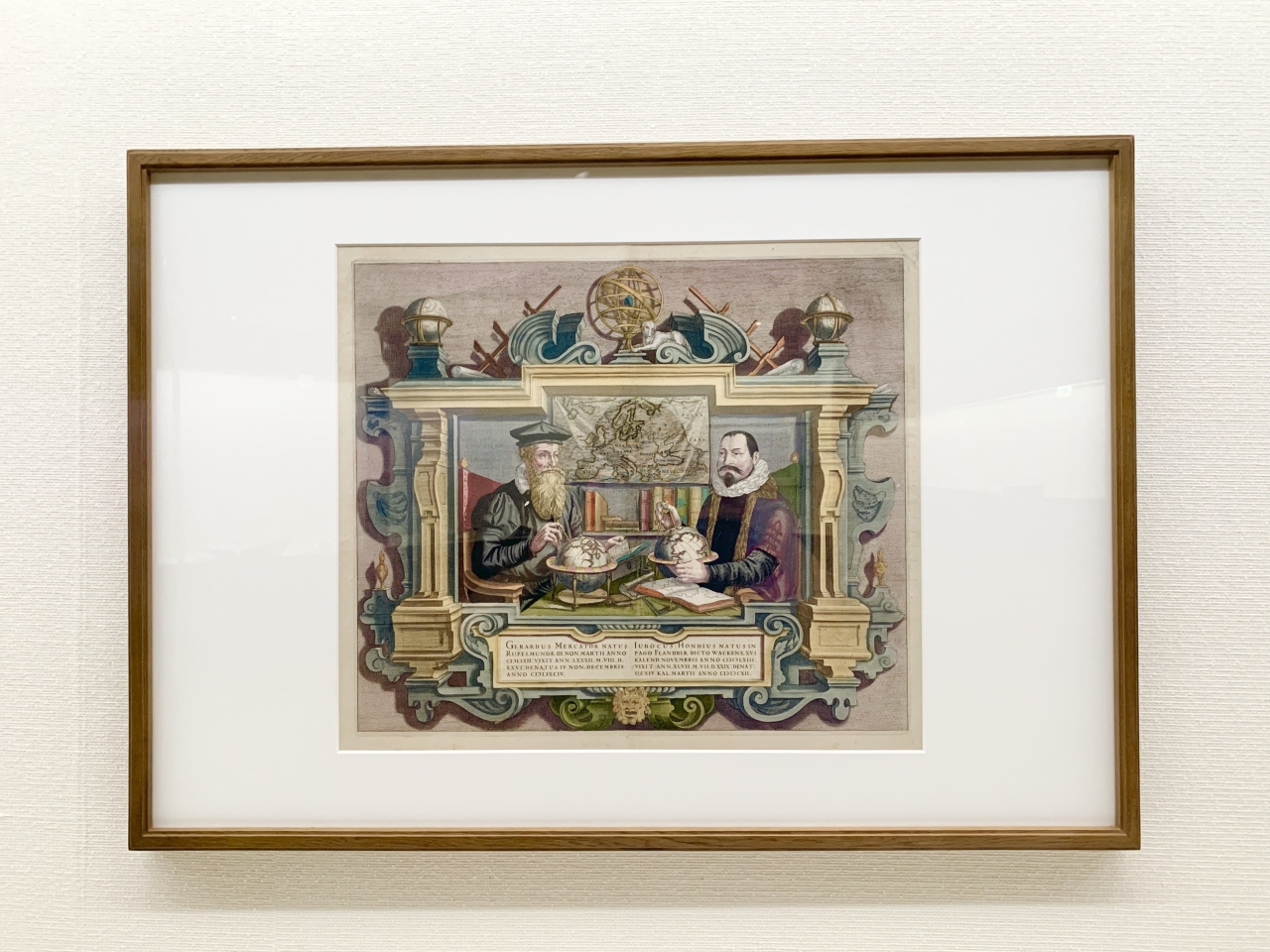
Portrait of the inventor of the Mercator projection. Coretta van den Köhle Hondius, Portrait of Gerardus Mercator and Jodocus Hondius, Amsterdam, circa 1628
Also pay attention to the globes of Vopel, a cartographer from Cologne, Germany.
At the time it was produced, many people believed that the Americas were India and Zipangu (Japan), just like Columbus. .
This is the first time it has been transported to Tokyo from the collection of the Tenri Library, which was kept secret. It is said that the globe presented to Nobunaga Oda was of the same type. As Fopel's globe, it is the oldest surviving globe, and it is also a very valuable work as it is almost the only one in the world that remains in its complete form.
In addition, there are many exhibits that tell the story of contact with different cultures, such as beads used by European merchants as a substitute for currency in Southeast Asia, and Bibles translated into the languages of the Algonquian people (North American natives).
The Age of Exploration is the turbulent Warring States period in Japan when Nobunaga Oda and Ieyasu Tokugawa played an active role. The second half of Chapter 2 introduces the influence that people of the Warring States period had on each other through contact with Europeans.

An early 17th-century chronicle of Nobunaga Oda, who made black slaves his vassals. Gyuichi Ota's "Nobunagaki" early Edo period copy
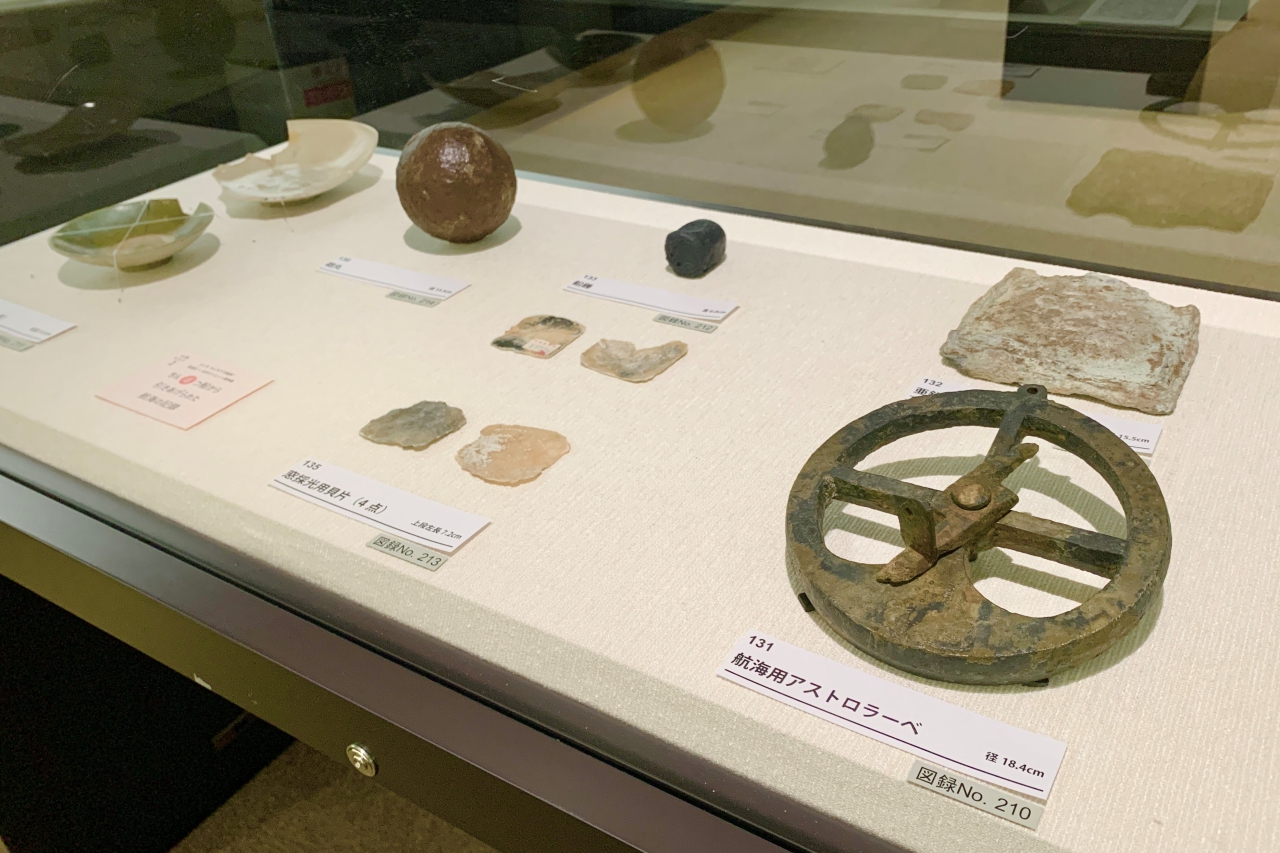
Materials recovered from the Portuguese ship sunk by Harunobu Arima, the lord of Hizen Hinoe Castle, in retaliation for the murder of a vassal. Sunken off the coast of Nagasaki in 1610 (Keicho 14)
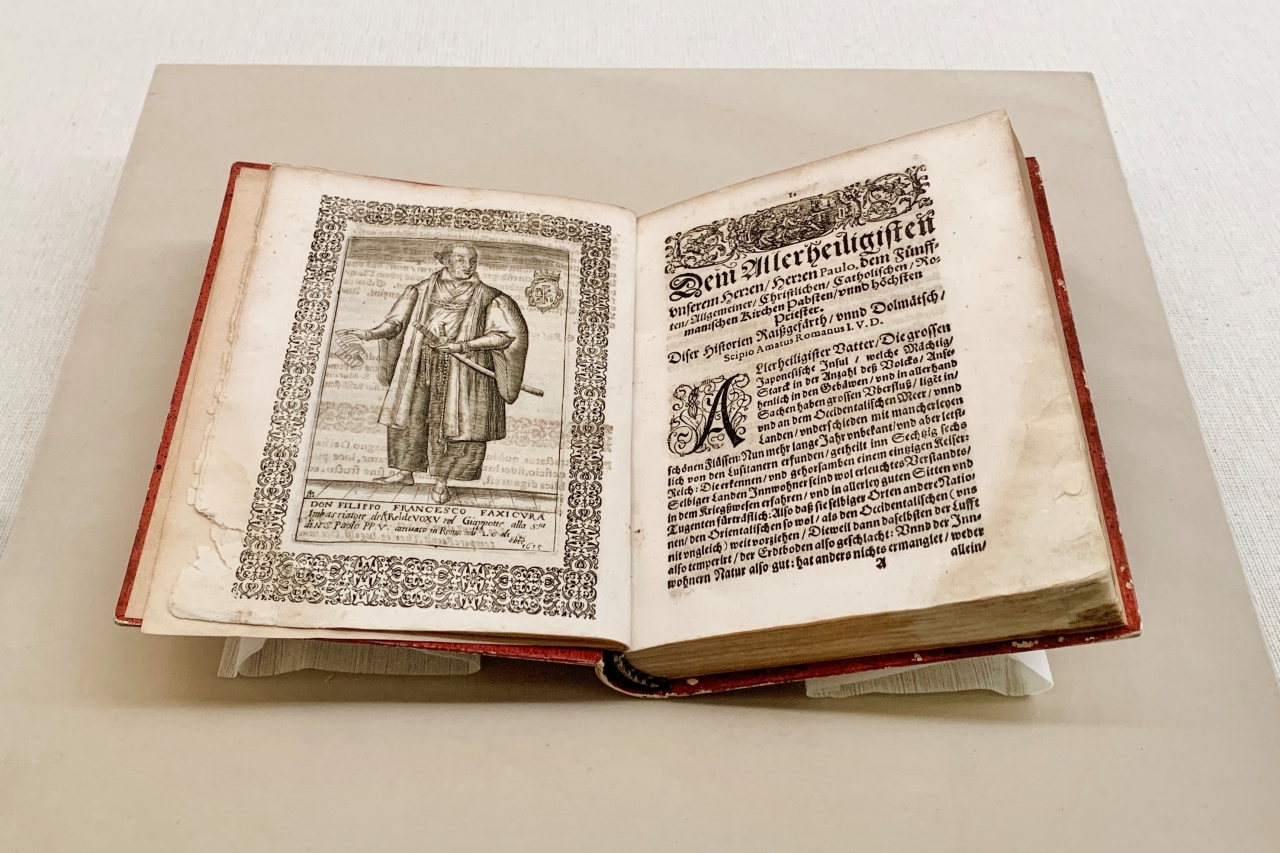
A book that records the state of Date Masamune's Keicho mission to Europe from the European side. Amati, Date Masamune's Envoy to Europe (Record of Date Masamune's Mission to Europe), German edition, Ingolstadt, 1617
Although it is not directly related to the Age of Exploration, the famous "Honjo Soemon Memorandum" is also on display as the only concrete record left by the samurai who participated in the war on the side of Akechi in the "Honnoji Incident." Do not miss it!
In addition, this exhibition will be a traveling exhibition of the special exhibition held at the Tenri Reference Hall in 2020, and due to the capacity of the venue, the exhibited works will be carefully selected and the scale will be reduced. The pictorial record sold at the venue is from when it was held at the Tenri Reference Museum, and contains more materials than can be appreciated at the Tokyo venue, so reading it will deepen your understanding.
During the period, there will be an exhibition explanation tour for the visually impaired, a workshop on "making dragonfly balls with oven clay", and a lecture for parents and children where they can learn about "Silk Road and the secret of 3D map models". It is said that
This summer, why not relive the excitement of the people of the Age of Discovery at this exhibition?
Outline of the special exhibition “To the Age of Discovery: The World Opened by Marco Polo”
| venue | Ikebukuro Sunshine City Bunka Kaikan Building 7F Ancient Orient Museum |
| exhibition period | July 16th (Sat) – September 11th (Sun), 2022 |
| Opening hours | 10:00-16:30 (admission until 16:00) *Opening hours are subject to change. Please check the official page for details. |
| closing day | open every day during the exhibition |
| Admission fee | General 1,000 yen, University and high school students 700 yen, Elementary and junior high school students 300 yen *Discounts for groups of 20 or more and discounts for people with disabilities are available. *Half-price discount for those with a disability certificate (one accompanying person is free to enter) |
| organizer | Ancient Orient Museum, Tenri University Tenri Reference Hall, Tenri University Tenri Library |
| official page | https://aom-tokyo.com/exhibition/220716_daikoukai.html |
*The contents of this article are as of the preview (2022/7/15). Please check the official website for the latest information.
<Past coverage report>
[Interview report] "Crayon Shin-chan Cinema Parade THE MOVIE OFFICIAL STORE" featuring historical movies opens in Sunshine City! Life-size figures of popular characters also appear
Click here for the list of interview reports

